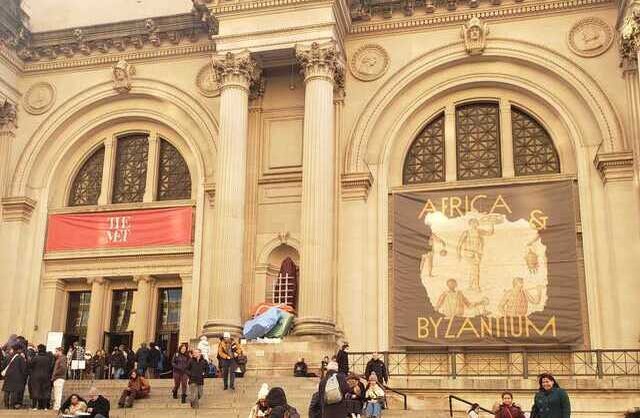 At the MET in New York, Ethiopia's artistic legacy takes center stage in the pivotal exhibition titled "Africa & Byzantium," showcasing its profound influence, extending even to contemporary art. (Photo: TADIAS)
At the MET in New York, Ethiopia's artistic legacy takes center stage in the pivotal exhibition titled "Africa & Byzantium," showcasing its profound influence, extending even to contemporary art. (Photo: TADIAS)
Tadias Magazine
Updated: February 22nd, 2024
New York (TADIAS) – Ethiopia’s rich history is finally receiving the recognition it deserves in major U.S. art institutions, ranging from The Metropolitan Museum of Art (MET) in New York to the Walters Art Museum in Baltimore, the Toledo Museum of Art in Ohio, and the Peabody Essex Museum in Salem, Massachusetts. At the MET in New York, Ethiopia’s artistic heritage assumes a central role in the seminal exhibition dubbed “Africa & Byzantium,” spotlighting its profound influence, extending even to contemporary artists. Ethiopia stands as a significant contributor alongside other influential ancient African kingdoms, whose interactions with Byzantium have left an indelible mark on the Mediterranean world.
“This is Ethiopia’s moment,” declares Tsedaye Makonnen, a multidisciplinary Ethiopian American artist who serves as the guest curator of contemporary art for the Walters exhibition. Her captivating artwork features prominently in installations at both museums. At the MET, Makonnen’s pieces are showcased alongside Theo Eshetu’s compelling video montage, which commemorates the return of the Aksum Obelisk to Ethiopia from Rome in 2005, rich with symbols and iconic imagery.
Next week, the MET will host Tsedaye Makonnen for a “site-specific performance that journeys through the history of the Byzantine Era’s African diaspora.” This show coincides with the display of her Astral Sea textiles as part of The Met’s Africa & Byzantium exhibition.
Hailing from the vibrant Ethiopian community in the Washington, DC metropolitan area — home to the largest Ethiopian population in the United States and outside of Ethiopia — she brings a unique perspective to the exhibition’s narrative. In a recent conversation with Tadias Magazine, she described the DC region as a place where Ethiopian culture thrives alongside robust ties to Black American culture. Embracing this dual identity, Tsedaye emphasized how it shapes her approach to art making as well as curating.
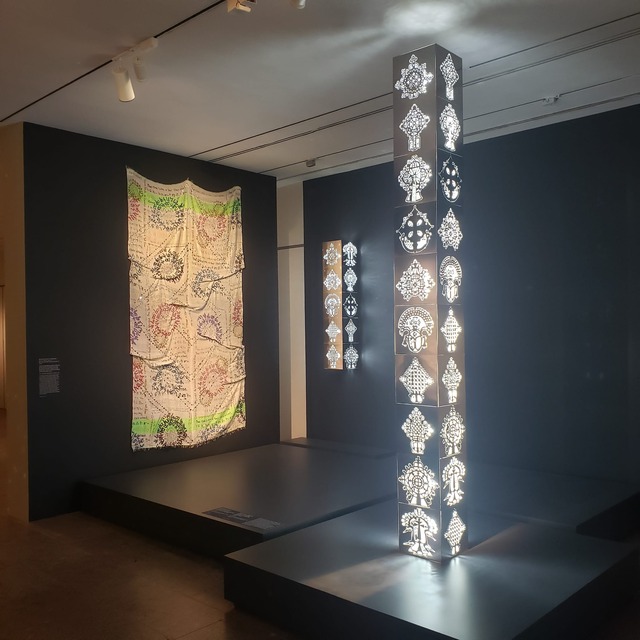
Tsedaye Makonnen’s installations at the MET in New York. (Photo: TADIAS)
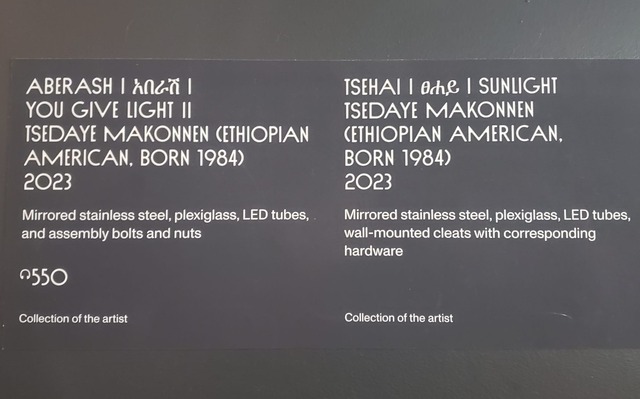
(Photo: TADIAS)
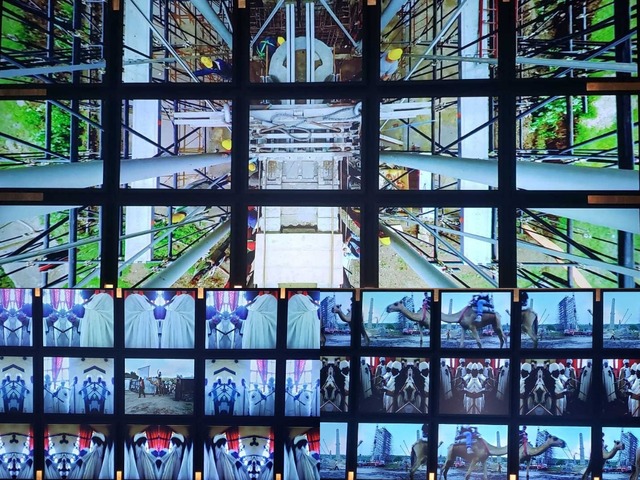
At the MET, Theo Eshetu’s video, showcased alongside Tsedaye Makonnen’s installations, juxtaposes footage of the 2005 return of the Aksum Obelisk to Ethiopia from Rome with images of Ethiopian painting. The multi-channel presentation unveils the intricate nuances of restitution, a topic currently dominating conversations among museum experts and art historians, under the theme “Legacies & Reflections.” (Photo: TADIAS)
Watch: Artists on Artworks—Africa & Byzantium
In this video, moderated by Hannah Giorgis, a staff writer for The Atlantic, Tsedaye Makonnen and Theo Eshetu are joined by fellow artist Azza El Siddique to discuss the exhibition “Africa & Byzantium” and explore its significance in relation to their own artistic pursuits.
“Ethiopia at Crossroads” at Walters Art Museum
In Baltimore, the traveling exhibition titled “Ethiopia at Crossroads,” currently on view at the Walters Art Museum, is the first major art exhibition in America to explore Ethiopian cultural and artistic traditions comprehensively, from their origins to the present day. It charts the ways in which engaging with surrounding cultures manifested in Ethiopian artistic practices.
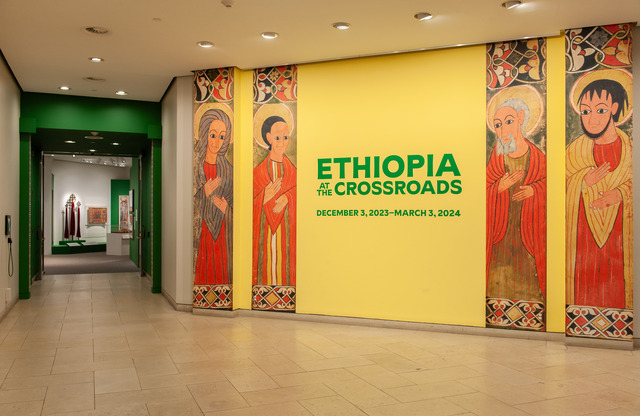
Photo: The Walters Art Museum
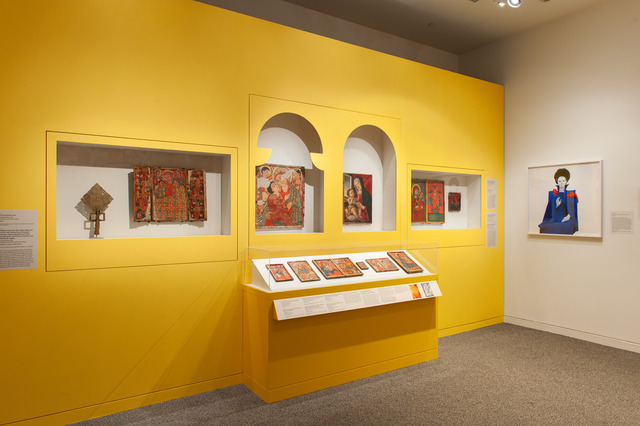
Photo: The Walters Art Museum
The exhibition, which is set to travel to Ohio and Massachusetts this Spring and summer, also showcases artworks by contemporary Ethiopian painters and photographers from the diaspora, as well as those from Ethiopia, curated by Tsedaye Makonnen.
TADIAS: You’re an Ethiopian American multidisciplinary artist yourself, and how did your own experiences and perspectives influence your curation process?
Tsedaye Makonnen: That’s a great question. I think, well, having parents who migrated here in the ’70s, being born in DC.. at Howard, but then growing up in Silver Spring, definitely shaped how I moved through the world, because I really do feel like I grew up in a little Ethiopia in Silver Spring. But then also having really strong roots and being influenced and raised by Black American culture from being in the D.C. area. And even how much of that my parents and their crew of a lot of the Ethiopians who came here around the same time where they expressed, ‘We landed here and felt comfortable here because this is a very Black city, and we were welcomed. So it felt like a second home.’ And I carry that. So I’m very much aware of my Ethiopianness and my Blackness, and I’m very proud of both of those things. And I mean, to me, they’re the same thing.
But having those roots are, I realize when I leave and go elsewhere, how I’m so grounded, and I’m grateful for that grounding. Because my mom will always says, ‘You have to know who you are,’ and I’m like, ‘Oh, I know who I am.’ So I think all of that, I brought that to this creation with the Walters, and just seeing that in all of the artists that are a part of the show, that it’s not only that they’re making these very contemporary works that are reflecting the times, but they’re also sharing all of the different identities that exist within themselves. Right? So someone like Theo Eshetu, not only do I just visually love his work, it’s so stunning. And I’ve never seen a video artist make work in that way. So he’s clearly making a new visual language that hasn’t existed in video art.
But also, his background, his history to me is so fascinating. Someone who was born in the UK but of Ethiopian parents also has roots in Italy and has lived in Berlin. He’s a man of the world. But even with that, he’s Ethiopian, he carries that with him. And I think all of these artists who are in this show, as global as they are, that it’s really fascinating and telling how the presence of being Ethiopian or Ethiopia is so important to them. Because, Faith Ringgold isn’t Ethiopian, but as a Black American, the history of Ethiopia means so much to her, so yeah.
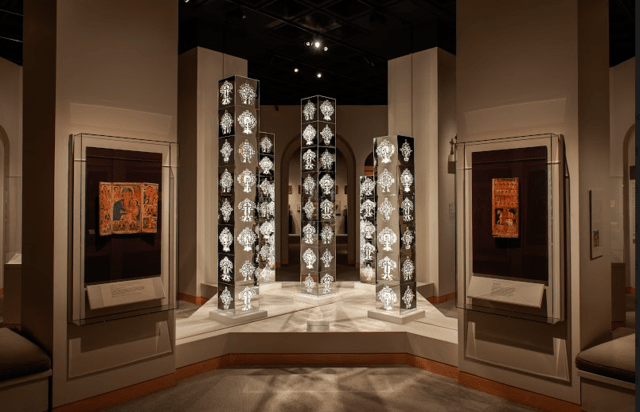
Tsedaye Makonnen, Walters Museum, Senait and Nahom installation, Smithsonian loan. (Walters Art Museum)
TADIAS: So how do you see contemporary art contributing to the broader narrative of Ethiopian culture, artistic tradition?
Tsedaye: Well, I think contemporary art, usually if it’s done well, it’s pulling from the present, but then also the past, and kind of bringing the two together. And it has the ability to see the future. So I think that a lot of these contemporary Ethiopian artists that are working now are doing that really well, as you can see in the Walters Show. And part of what this show is talking about is this literal crossroads, which also implicates migration.
So I think what’s so cool and important about the show is it really is highlighting not just Ethiopia, for Ethiopians on the continent, but for the diaspora as well. And as you know, you live here in the US, you have a child here. I keep thinking about the generations that are continuing to be born here and in other parts of the world outside of Ethiopia that really do, I think it’s so important for them to see themselves in these spaces outside of Ethiopia as well, because that’s their identity, and it reflects their existence.
And also, I think what’s so important about Ethiopian contemporary art is the fact that there’s generations, currently and in the past, that have been influenced by the art school in Addis, but then who’ve come from there and then come here, and have taught a whole new generation of artists. Somebody like Skunder Boghossian, for example. And it’s just this gift that keeps on giving. And that trajectory is so important to follow and to document because it’s now influencing outside of itself. Ethiopia has always been so influential towards the world, and I think there’s a contemporary version of that that’s happening actively now and has been happening since the ’60s and ’70s, that it’s just important to really document that for future generations. And then it’s important for obviously why something like Tadias Magazine exists. So we have to do that for ourselves, and force the narrative to shift as well, to acknowledge us.
If You Go:
The event at the Walters Art Museum culminates with a festive program during the Adwa celebration in the first week of March, featuring an evening of art-making, music, performances by Ras Band, a special appearance by Dereje Bekele, delectable treats from local Ethiopian vendors, and a fashion show organized by the Walters’ College Student Advisory Group. Visitors can savor the last weekend of the exhibition with special late-night hours.
—
Related:
Video: Artist Talk, Tsedaye Makonnen | The Walters Art Museum
Podcast: Ethiopia at the Crossroads featuring curator Christine Sciacca | The Walters Art Museum
Join the conversation on Twitter and Facebook.

























